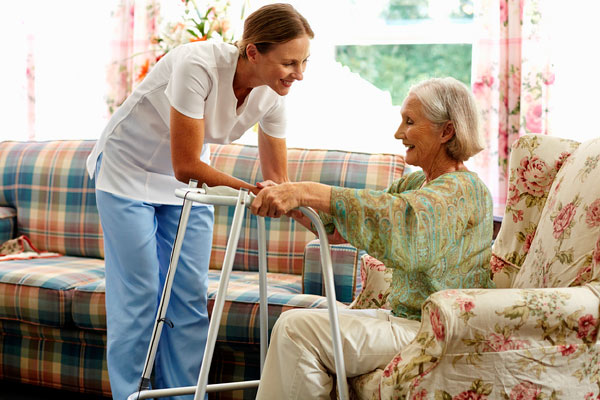A stroke is a serious, life-threatening event. While there are varying degrees of stroke severity and many people survive, the after effects are often extremely challenging as well. According to the National Institute on Aging, stroke is the number one serious cause of disability among adults in the United States.
Knowing the signs of a stroke and acting quickly to get help can save your life or the life of someone you love. Call 911 immediately if you have any of these symptoms or notice them in someone else:
- Numbness or weakness on one side of the body, usually in the face, arm or leg, that comes on suddenly
- Confusion or trouble speaking
- Sudden trouble seeing in one or both eyes
- Dizziness, loss of balance/coordination, or trouble walking that comes on suddenly
- A severe headache with no known cause
- Double vision, drowsiness, and nausea or vomiting
Recovery and Rehabilitation
For most survivors of stroke, physical therapy is a key part of rehabilitation. Depending on the severity of the stroke, patients may need to relearn some basic activities such as sitting, standing, walking, and transitioning from one action to another.
Occupational therapy, sometimes referred to as OT, can also be a big help for stroke patients. The goal of OT is to help people learn how to do things such as eat, drink, swallow, dress, bathe, cook, use the toilet, and other daily activities again. The focus of OT is to help stroke patients become as independent as possible once again.
Speech therapy may also be required if a stroke causes issues with a person’s ability to speak or to understand the speech of others. Rehabilitation and therapy can seem daunting at first. However, with time and patience, many stroke patients are able to regain some, if not all, functionality.
Understanding and Preventing Stroke
While the effects of a stroke can be devastating, it’s important to remember that strokes are preventable. There are some risk factors for stroke that are out of your control, such as genetics, race, and age. Still, your risk for stroke can be reduced by making some simple lifestyle changes.
- Stop or refrain from smoking. Smoking greatly increases a person’s risk for stroke, but stopping (or never starting) can lower that risk.
- Eat right. A healthy diet improves overall health, including the reduction of stroke risk. Choose foods low in fat and cholesterol and incorporate plenty of fruits and vegetables into your diet.
- Make exercise part of your daily routine. Talk to your doctor about how to best incorporate exercise into your life in order to prevent a stroke.
- Keep blood pressure under control. High blood pressure can lead to both heart disease and stroke. If you have high blood pressure, follow your doctor’s instructions for treating it in order to lower your stroke risk.
- Keep cholesterol under control. Cholesterol is a type of fat that builds up in the arteries, and too much cholesterol can block the flow of blood, causing a stroke. Have your doctor check your cholesterol levels regularly to ensure you maintain healthy levels.
- Manage diabetes. When untreated, diabetes can damage blood vessels and narrow arteries, which can lead to stroke. Properly managing diabetes can reduce these risks.
Making these changes to your lifestyle can help reduce your risk of stroke. If you’ve had a stroke in the past, these steps are also very important in order to prevent a second stroke.
If you or a loved one needs assistance at home during stroke recovery or would like help maintaining a healthy lifestyle in order to prevent a stroke, the referred care providers from American, Advocate, and Whitsyms In-Home Care can help! We can provide a wide range of services, including transportation to and from therapy appointments, planning and preparing healthy meals, providing motivation for physical activity, running errands such as grocery shopping and picking up prescriptions, and much more.
Contact us any time to learn how we can help you or a loved one recover from or take steps to prevent a stroke. Reach out to the office nearest you by clicking the links below to get started:
- American In-Home Care – Serving North, Central, and West Coast of Florida
- Advocate In-Home Care – Serving Southeast and Southwest Florida
- Whitsyms In-Home Care – Serving Southeast and Southwest Florida
State of Florida License and Registration Numbers: 30211518, 30211651, 30211295, 30211390, 30210978, 30211293, 30211382, 30211504, 30211733, 30211535, 30211531, 30211710, 30211709, 30211045, 5661


